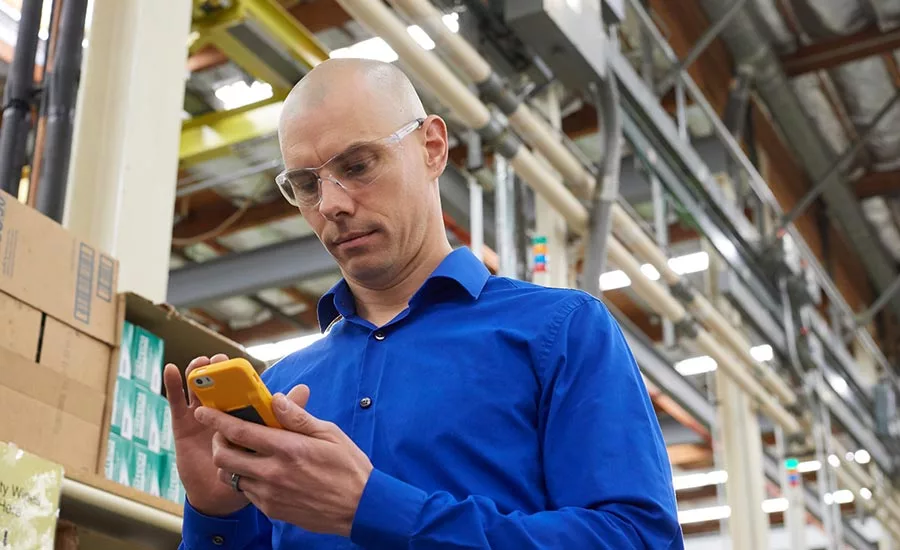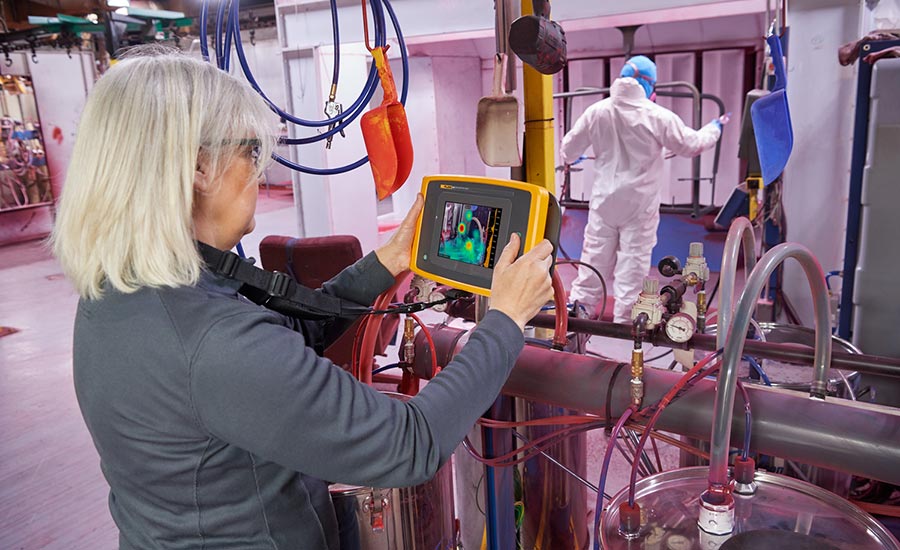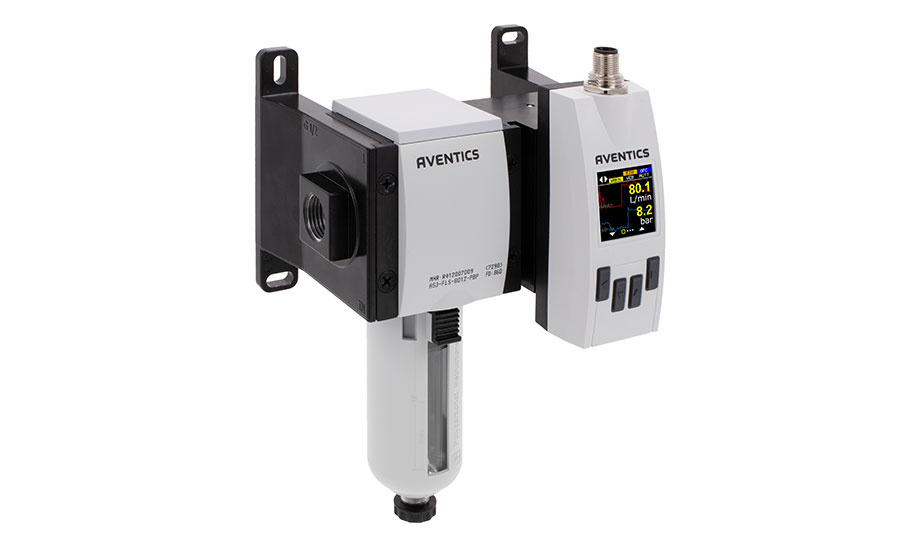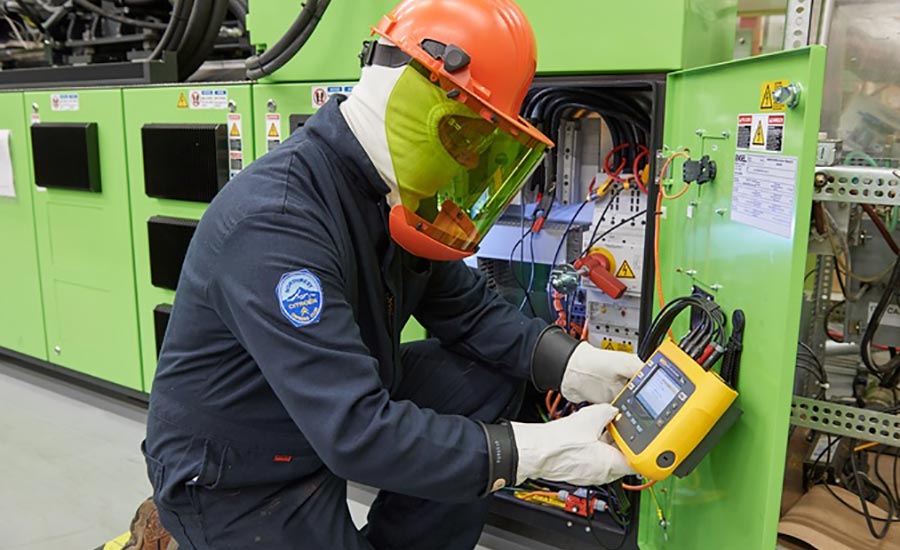PdM and beyond
Implementing predictive and prescriptive maintenance strategies can help food and beverage companies save time, energy and money

Fluke Connect software collects, stores and makes viewable machine data from more than 80 Fluke tools and sensors. Measurements are stored in the cloud, where teams can always access the data on their smart device or computer. Photo courtesy of Fluke
When it comes to maintenance in food and beverage processing facilities, we’ve come a long way. Reactive maintenance made its way to preventive maintenance; through sensors and software, predictive maintenance (PdM) helps anticipate equipment issues, giving maintenance teams the data that will allow them to catch breakdowns before they can occur. Take it a step further, and prescriptive maintenance incorporates machine learning and artificial intelligence to prescribe solutions for an optimum result. Given what technology has allowed facilities to do in the way of PdM and beyond, reactive maintenance is in the rearview mirror—and industry should never look back.
PdM allows maintenance to take place when it is least disruptive and most cost-effective, according to Harshad Shah, president and founder of Eagle Technology Inc. He says that its benefits include reduction or near elimination of unscheduled equipment downtime caused by equipment or system failure; increased labor utilization; increased production capacity; reduced maintenance costs; and increased equipment lifespan. “Predictive maintenance ensures that production equipment doesn’t fall below prescribed performance, quality and safety standards,” he says.

The Fluke ii900 industrial acoustic imager is being used for air and gas leak detection here. Photo courtesy of Fluke
Gerson Henning, manager of business development for food and beverage packaging at Emerson, agrees. “A food and beverage facility gains a wide range of valuable benefits when it implements a pneumatic valve and actuator monitoring system,” he says.
He adds that a combination of self-diagnosing instrumentation, asset health predictive monitoring and reliability consulting services helps save processors time, energy and money.
“Pneumatic valves and actuators are critical to various manufacturing processes and have a recommended life cycle,” Henning says. Component degradation and failure can result in quality issues, unexpected downtime and high costs. “By monitoring components in near-real time, facilities can reduce unplanned downtime, CO2 emissions and operating costs while improving OEE, product quality and food safety.”
Michael Watson, product application specialist at Fluke Corp., adds that the greatest benefit of implementing a PdM strategy is time. “It’s all about time,” he says. “Technician time, time for managers. With PdM technologies unplanned events are minimized and the team is allowed to work to the plan.” He notes that planned work is safer than unplanned work. “Utilizing data to determine when to perform maintenance on an asset allows the work to be planned and provides safer work for the technician, lower expediting for the procurement and planning teams.” Finally, the benefits of quality and compliance can be realized with predictive and prescriptive maintenance.
THE MORE YOU KNOW
Before implementing PdM, Shah says that customers should first review and analyze current maintenance performance. “This will ultimately give insight into where the organization has been and where it is heading, areas for improvement and if targets are being reached,” he says.
Next, identify critical assets. Doing so allows for an understanding of which assets are critical to workflow and operations, thereby optimizing asset performance while reducing cost and risk. The last step in the planning process is to identify critical spare parts. A lack of available spare parts during a breakdown can be problematic and costly to a facility. “Having access to the correct parts during a breakdown or planned maintenance is important to ensure limited downtime and loss of production,” he adds.

The AVENTICS™ Series AF2 Flow Sensor monitors air consumption in pneumatic systems, enabling actionable insight around air consumption and leakage. Photo courtesy of Emerson
Henning says it’s important for customers to identify three things: 1) The critical points and components, such as actuators or valves, to predict failures; 2) The base line that should be used as comparison reference; and 3) The most critical points they would like to begin monitoring, such as a particular machine or line. “Instead of addressing an entire plant at once, many of our customers begin monitoring a concentrated area, prove ROI, and then scale up to the whole installation (machine/line/plant),” he says.
Fluke’s Watson cautions that PdM programs might fail due a multitude of reasons. For instance, there may be a perfect storm of operational challenges and the PdM program is put on the back burner. Maybe a key stakeholder changes roles and the program loses momentum. Or perhaps a key PdM technician leaves the organization and takes with them a significant amount of the PdM knowledge, and, therefore, the program falters. “Too many times a team is directed to implement PdM technologies, and the program gets stuck in the pilot phase and never achieves a significant result,” he says.
To curtail these scenarios, Watson reviews several steps with his customers to ensure their PdM program delivers results and is sustainable. First, he asks if everyone—from the team members to management—have a common understanding of the strategy or goals of the PdM program.

The Fluke 3540 FC three-phase power monitor safely examines voltage, current and frequency from electrical systems to visualize asset health and gain insights into reliability strategies. Photo courtesy of Fluke
“Maintenance, operations and management should all have a common view of the maintenance and reliability strategy and how PdM will be incorporated into the operational processes and maintenance workflows,” he says. “The PdM technology must become part of the overall strategy of managing the assets in the facility.”
Be sure to ask if the asset criticality is defined. “The correct predictive maintenance technologies should be matched to asset criticality and asset failure modes,” he says. “Applying the correct technology provides the best opportunity to predict when specific failure events are expected to occur. Asset criticality also helps minimize waste and develop buy in across the organization.”
Watson then says to ask what success looks like. Are there KPIs that provide a measurable outcome? “Defining success up front gives everyone a clear picture of the desired outcomes. Then make sure the PdM technology aligns with the outcomes and measurable impact on the KPIs.”
Because programs fail when data silos are created, he says to think through who needs to the data to make a decision or to improve an understanding of an asset condition. Gaps in sharing data, or complexity in getting data to the right person create barriers to a successful program.

Next, manage the knowledge. Watson says this step is often overlooked and becomes a reason PdM programs fail when a key person leaves the organization. “Predictive technologies can provide greater insights to the condition of an asset, and as these insights are understood, the knowledge needs to be captured in the client’s repository of asset information. In most cases this should be the EAM or CMMS system. As a program matures, additional improvements in asset health can be derived by comparing assets across multiple facilities or comparing similar asset classes.”
Once the PdM program is organized and the building blocks are in place the team should plan the implementation. “Start small,” he adds. “Start with a single technology. Develop a PdM program with vibration; for example, demonstrate some success and then scale across the facility. Once your first PdM technology is fully implemented, then implement additional technologies.”
IMPLEMENTING A COOL SOLUTION
When asked for any stats he might have about PdM’s benefits, Henning talks about an ice cream manufacturer that came to Emerson looking to implement predictive/preventative maintenance and energy monitoring on their 24 filling machines used to make packaged ice cream cone products. Air leakages in the line impaired machine performance, slowing cylinder speed and causing product inconsistencies. “In order to repair leaks and monitor line performance, the manufacturer invested a lot of time and money on technician resources,” Henning says.
Emerson provided the manufacturer with a pneumatics solution that includes its Aventics valve manifold, cylinders and sensors and Avantics Series AF2 Flow Sensor, as well as an outcome-optimizing controller and software in a control cabinet. “The integration of the new components and monitoring system identifies compressed air leakage areas faster, improving overall machine efficiency and maintenance costs,” he explains.
“In addition, while not specific to one facility, downtime for a typical food packaging line can result in $250/minute. For every hour of downtime a facility avoids due to pneumatic actuator and valve monitoring, they can save $15,000. Facilities can also typically see savings of 10% to 20% in air compression and energy costs, as well as a 10% reduction in their carbon footprint,” Henning says.
Shah adds that research has shown that as much as 30% of all time-based preventive maintenance tasks can be eliminated through the use of PdM. “Implementing predictive maintenance is very cost-effective, saving organizations between 8% to 12% over preventive maintenance and up to 40% over reactive maintenance.”
For more information:
Eagle Technology Inc., www.eaglecmms.com
Emerson, www.emerson.com
Fluke Corp., www.fluke.com
Looking for a reprint of this article?
From high-res PDFs to custom plaques, order your copy today!







